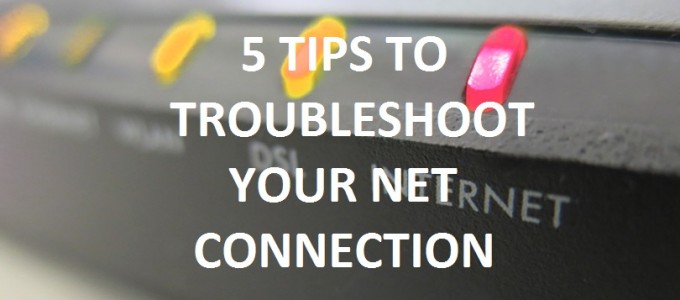5 Tips To Troubleshoot Your Net Connection

5 Tips To Troubleshoot Your Net Connection
When you purchase a new router automatically you disconnect the older one, you will connect to new one, and follow the producer instructions for setup program. Even though you can observe the new wireless network and not able to even connect to your PC or device, as a result you cannot browse the net. In this article we will focus on some of the common troubleshoot during your internet connection.
New Router won’t connect to the net
First and initial problem is “My Internet is so slow.” “I can’t be able to stream video from my smartphone to HD Television.” “My phablet won’t attach to my router.” These are just a few common problems that any customer can experience with their homely networks and wireless connections. The first step is recognizing what your router is and how it performs. A router mainly performs on two primary functions:
- It directs data packets between networks.
- It produces as a wireless access point, sharing the inbound Internet connection with all devices.
A router is mainly a central figure in a domestic network, attaching the extensive Internet with our approximately tiny but private networks. That’s a complex thing of responsibilities for a small device in order to perform. A number of routers handle all these jobs fairly well. But, because all of these consequences are critical in perspective to router’s network. And your router will present as, from time to time. Regrettably, the bridges between the net and a domestic user’s local area or LAN, are the perfect ground for host problems. Not able to browse net, irregular connections drops and dead spots in wireless are just a small portion of the endless invocation.
Router setup Software won’t Detect the Router
This is literally a common issue with newly purchased routers from the market that have automated setup functionality. Few a times the setup procedure just doesn’t work for you. Here is how you can detour the setup procedure and go right into the router’s administration interface in order to set up a wireless network. Always remember to attach an Ethernet cable from your PC to one of the LAN ports of the router (Please note: you can also retain the router attached to the broadband). Proceed into your PC’s network settings. Moreover, in Windows 7 and 8, they are placed in Control Panel – Network and Internet – Network and Sharing Center.
Wireless Network’s Name/SSID Disappeared
Suddenly, your SSID or Wi-Fi network existence is no furthermore listed when you click to watch available wireless networks. There are a number of reasons this might taken place, and it’s not an uncommon incidence. Force your PC or device to connect to the router even if it’s not transmitting. From Windows, proceed into Control Panel then to Network and Internet and then to Network and Sharing as well as also Manage Wireless Networks. No doubt, you still desire to detect out why your SSID stopped transmitting data. Examine to assuring that transmitting was not accidentally disabled in the router’s software, you can reboot your router and check for any updates for software.
Internet Connection Keeps Dropping
This is consider to be a very common issue in these days, mainly for those with cable net service or FIOS. You can’t believe that how frequently this issue is, which is occurred by a cheapen signal receiving into the cable modem. If you utilize splitters, please don’t go for try to replace them. If you have a number of splitters on an inbound cable connection, like the one which is coming into your home and another in order to break out the cable signal in your house entertainment system. This can result into a decrease in signal loss. Also, if you materialize to have a 3-way splitter and you are not utilizing the 3rd connection, attempt to replace it through a two-way splitter.
Moving from one room to another, the Wi-Fi Signal drops
There are enormous things that could cause a wireless signal drops. The big criminal is interference. Cordless phones and other device utilizing the 2.4GHz band could be the actual reason for this. Even things that you can’t imagine can be the real cause interference, including glass and mirrors. Once you have cross – examined for physical interference, examine something: Do all your devices and PC’s lose signal at the similar location, or just one in specific? If all exists like this then, chances are the problem lies within the router. Moreover, consider an external antenna for the router, also examine for router-firmware updates. You may have to appraise the cross – examining in a wireless extender. If one particular machine is dropping the status of signal, update the firmware as soon as possible for that machine’s wireless client adapter is there to upgrade.
Leave a Reply